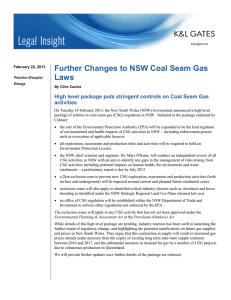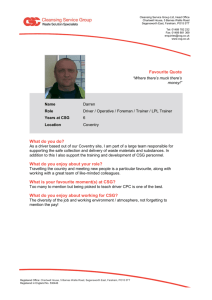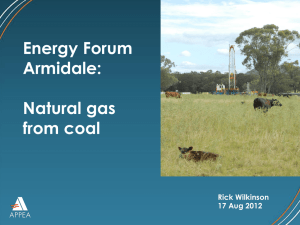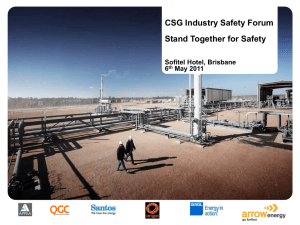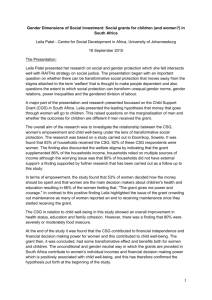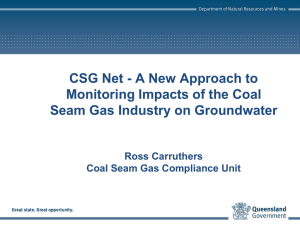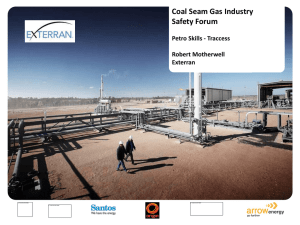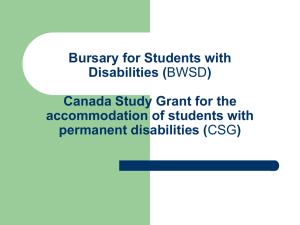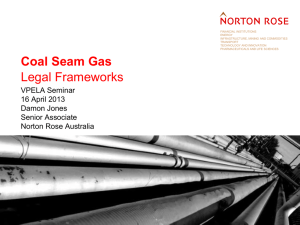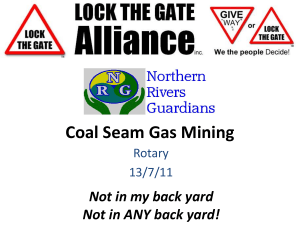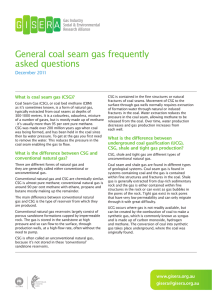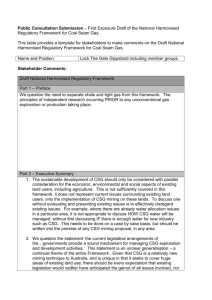Water Services Association of Australia
advertisement
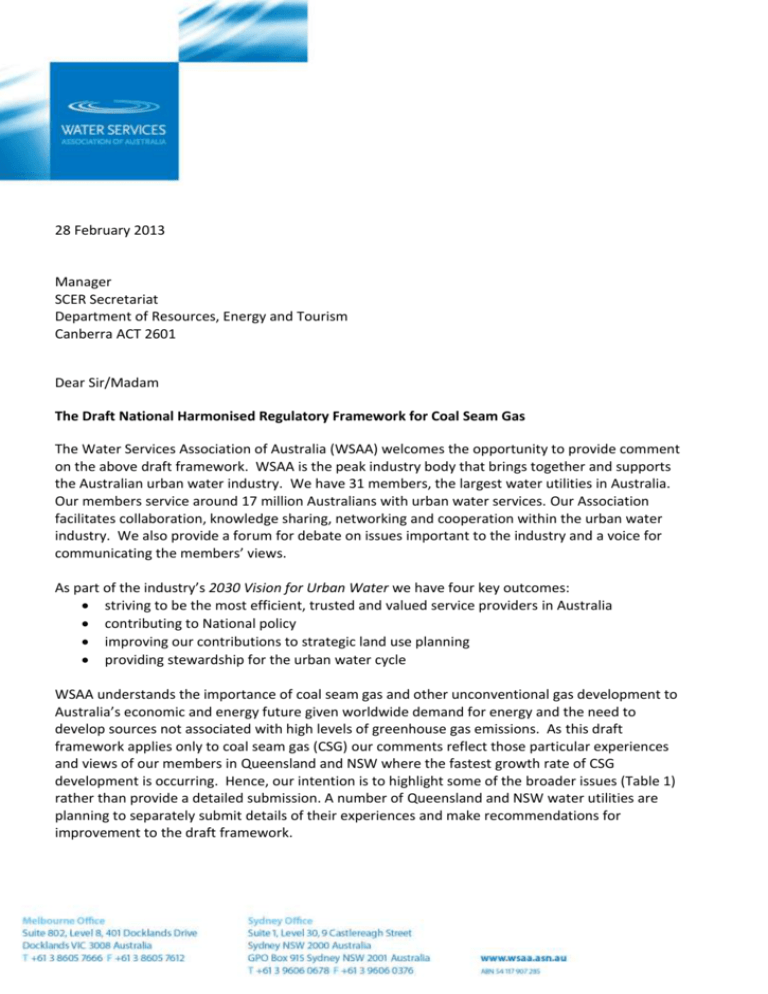
28 February 2013 Manager SCER Secretariat Department of Resources, Energy and Tourism Canberra ACT 2601 Dear Sir/Madam The Draft National Harmonised Regulatory Framework for Coal Seam Gas The Water Services Association of Australia (WSAA) welcomes the opportunity to provide comment on the above draft framework. WSAA is the peak industry body that brings together and supports the Australian urban water industry. We have 31 members, the largest water utilities in Australia. Our members service around 17 million Australians with urban water services. Our Association facilitates collaboration, knowledge sharing, networking and cooperation within the urban water industry. We also provide a forum for debate on issues important to the industry and a voice for communicating the members’ views. As part of the industry’s 2030 Vision for Urban Water we have four key outcomes: striving to be the most efficient, trusted and valued service providers in Australia contributing to National policy improving our contributions to strategic land use planning providing stewardship for the urban water cycle WSAA understands the importance of coal seam gas and other unconventional gas development to Australia’s economic and energy future given worldwide demand for energy and the need to develop sources not associated with high levels of greenhouse gas emissions. As this draft framework applies only to coal seam gas (CSG) our comments reflect those particular experiences and views of our members in Queensland and NSW where the fastest growth rate of CSG development is occurring. Hence, our intention is to highlight some of the broader issues (Table 1) rather than provide a detailed submission. A number of Queensland and NSW water utilities are planning to separately submit details of their experiences and make recommendations for improvement to the draft framework. Table 1. Broader issues for the draft framework Issue Community engagement Skilled resources Database of incidents Impacts on water supply authorities National Water Quality Management Strategy Local vs regional impacts Comment It’s likely that the full potential for CSG and indeed unconventional gas development will depend on: setting the broader context for these projects in terms of Australian and global energy security and greenhouse gas emissions reductions good community engagement encouraging transparency in decision-making processes (including clearly articulating roles and responsibilities) avoidance of the use of technical jargon. As CSG projects may directly or indirectly impact current or future drinking water supplies WSAA seeks a greater focus in the regulatory framework on best practice community engagement. This may be appropriate to really identify, assess, understand and manage social, environmental and economic values associated with water sources. A loss of skilled staff from regulatory agencies (which is already occurring) may negatively affect the regulation of CSG activities. The comprehensive development of standard procedures, guidelines and tools may mitigate this. But there are gaps in the publicly available guidelines or criteria for assessing risks and developing mitigation mechanisms. Improving transparency of decision-making processes should assist this. Create a nationwide database of water quality and environmental incidents at facilities. Analyse and report on trends. Establish appropriate avenues for information sharing and engagement between regulators, operators and water supply authorities during project appraisal and operations (particularly incident management). This includes advising water supply authorities of the risk assessments made for hydraulic fracturing so those authorities may make their own appraisal of the risks and the adequacy of their own monitoring and risk management activities. ‘Make good’ or compensation arrangement s should be extended to cover instances where water supplies are interrupted or otherwise compromised because of water quality impacts from CSG activities Make explicit the links between the draft framework, the NWQMS and guidelines prepared under the strategy. The impact of broader regional, particularly incremental changes in water levels over time may need further assessment. Water allocation issues really need to consider the flow on and cumulative effects particularly where aquifers interact over a number of surface catchment areas. WSAA is happy to elaborate on any of the above. Yours sincerely Adam Lovell Executive Director
